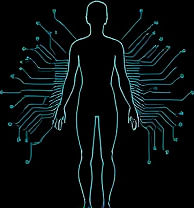Tracking Long-Term Health Metrics for Optimal Wellness
 by Shanie Goodwin
by Shanie Goodwin
Discover how monitoring long-term health metrics can transform your biohacking routine. From wearable devices to cognitive enhancers, learn practical ways to achieve sustained well-being and personal growth through data-driven insights.
Long-term health metrics offer a way to measure progress in personal health journeys. These metrics include factors like heart rate variability, sleep patterns, and cognitive performance. By focusing on biohacking, individuals can use this data to make informed decisions.
Wearable technology plays a key role in gathering this information. Devices such as smartwatches track daily activities and vital signs. For example, they monitor steps taken and calories burned over extended periods. This helps in spotting trends that indicate overall health improvements.
In biohacking, nootropics are another tool for enhancing mental clarity. Substances like caffeine or omega-3 supplements support brain function. Regular use of these can lead to better focus and memory retention. Tracking metrics before and after intake shows their impact on daily life.
Personal enhancement goes beyond gadgets and supplements. It involves lifestyle changes such as balanced diets and exercise routines. Keeping logs of energy levels and mood provides valuable data. This approach allows for adjustments based on what works best.
Benefits of Consistent Monitoring
One major advantage is early detection of issues. For instance, consistent tracking of blood pressure metrics can reveal patterns that suggest the need for changes. This proactive method supports ongoing health maintenance.
Many find motivation in seeing improvements over time. When users notice enhancements in their sleep quality, it encourages continued effort. Health optimization becomes a rewarding process through these visible results.
Integrating Wearable Tech into Daily Life
Start by selecting a device that fits your needs. Options range from basic fitness trackers to advanced models that measure oxygen levels. Once set up, review the data weekly to identify patterns.
For example, if metrics show irregular sleep, consider adjusting bedtime routines. This integration makes tracking seamless and effective.
The Role of Nootropics in Cognitive Health
Nootropics can complement physical tracking by targeting mental metrics. Users often report improved concentration after regular use. To measure this, simple tests like reaction time apps provide quantifiable results.
Over months, combining nootropics with other strategies leads to sustained cognitive benefits. It's about building habits that support long-term goals.
Strategies for Personal Enhancement
Begin with setting clear objectives, such as improving endurance or reducing stress. Use journals to record metrics like weight and mental alertness. Over time, these records highlight progress and areas for improvement.
Engage in activities that promote physical and mental balance. For instance, meditation sessions can influence stress metrics positively. Pairing this with wearable data creates a comprehensive view of health.
Challenges and Solutions
Sometimes, data overload can occur with too many metrics. Focus on a few key ones to avoid confusion. This targeted approach keeps the process manageable and insightful.
If motivation dips, revisit initial goals and celebrate small wins. Sharing progress with peers can also provide encouragement.
Building a Sustainable Routine
To maintain long-term success, make tracking a habit. Dedicate time each week to review metrics and plan adjustments. This consistency ensures that efforts in biohacking lead to lasting results.
Ultimately, the goal is to achieve a state of well-being that supports everyday activities. By prioritizing these metrics, individuals pave the way for enhanced performance and vitality.
In summary, focusing on long-term health metrics through biohacking tools and strategies offers a path to better living. With dedication, the results can be profound and enduring.
